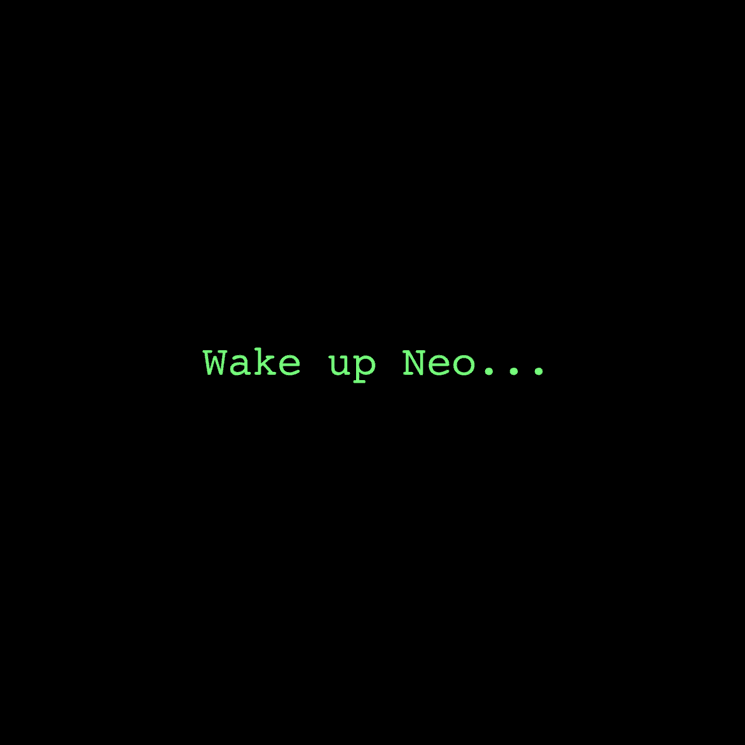Now that privacy is on the verge of being outlawed is the best time there has ever been to set up and run your own Bitcoin node!

This is probably going to sound like a sales pitch because it’s coming from us, but that’s really not the intention of this post. It doesn’t matter which node implementation you choose, just choose the one you want or whatever is the most convenient for you to get started with.
Run Bitcoin Core, run BitcoinKnots run start9labs, run BtcpayServer, runcitadel, umbrel or Raspiblitz. The important part is that it’s YOUR node. Think about it. We have ~18000 Bitcoin nodes online which is a laughable number when you compare it to the number of people on Nostr, Bitcoin talk and Twitter. At least three of those 18k are mine, and I suspect more people run multiple nodes, so the actual number of noderunning individuals is probably another magnitude smaller.
These Noderunners are serving the network, but much more importantly, they can verify that they get real Bitcoin when receiving UTXOs. And they can do so independently, over Tor, which means that, to this day, no one can stop them from doing so. If you don’t use your own node, you’re using someone else’s node.
With privacy services shutting down and wallet apps disappearing from appstores in certain jurisdictions, having your own money transmitter might not only come in handy, it could be the only way to transact freely if you have to.
No one knows what’s going to happen next, but don’t make the mistake to think the EU won’t follow suit. Be prepared for the moment when your favorite wallet shuts down. Practice recovery with SparrowWallet or a similarly capable wallet, (good luck finding one) which allows you to connect to a node which is behind Tor. Preferably your own, but Uncle Jim Nodes work too. Ask your friends if you can’t run your own. That’s what friends are for too, they share nodes.
At this point in time, individual Noderunners have not been targeted, because it’s hard and the effort mostly outweighs the benefits for the government, so far…

And with every node coming online, it gets harder to take Bitcoin down. Which in return strengthens each and every one of us. A critical mass of NodeRunners is an unstoppable force, we don’t claim to know when that critical mass is reached, but it’s certainly not 18000.

So, what to do now? Bust out your Raspberry Pis, RockPros, old Laptops, iMacs, Mini-PCs. whatever you have and get to work. Build a node, run it and learn how to connect to it. Do it before you need it!
But I was told only economic nodes matter!
The saying is not wrong, but it can be confusing. So, let’s define what an economic node is.
To grasp this, it’s essential to first understand the basics of how someone interacts with Bitcoin. Bitcoin essentially operates as a distributed ledger, paired with a network that manages updates and keeps all copies aligned, primarily to enable transfers of bitcoin (which are just entries in that ledger).
The main priority for anyone using Bitcoin in transactions is confirming that the funds they receive are legitimate—meaning they’ll be accepted as valid by others when spent later. If not, those funds hold no value as currency. This validation is the core function of a node: to check the authenticity of transactions.
For those checks to be accurate, a node requires a full inventory of all existing unspent coins, known as the UTXO set. When a transaction is shared across the network, the node verifies if the coins being spent are listed in this set and remain unspent. After the transaction gets included in a block, the spent coins are removed from the set, and any new ones generated are added. To assemble this UTXO set initially, the node has to process the complete history of all prior transactions stored in the blockchain.
It systematically adds newly created coins from each block and adjusts the set by removing spent outputs while incorporating fresh ones from every confirmed transaction. Without this thorough historical review, there’s no assurance that the node’s UTXO set is truly correct and valid (though future advancements, like zero-knowledge proofs, could potentially replace the need for the full blockchain history with a compact cryptographic verification that confirms a UTXO set’s accuracy up to a certain block height).
Your node works on your behalf, specifically to validate the chain of transactions leading to any coins you receive, ensuring they’re sound.
Simply put, an economic node is one that’s actively utilized in real financial transactions to verify the legitimacy of incoming funds. So even if you’re just stacking and hodling, receiving and verifying those transactions with your own node makes it an economic node.
Why does this matter so much? Why are only these types of nodes significant?
Consider what keeps Bitcoin operational: the collective adherence to identical consensus rules among participants. The reason there’s a single, cohesive Bitcoin network is that everyone enforces the same standards. When miners generate blocks, each node independently evaluates their validity and follows the chain with the greatest accumulated proof-of-work.This unity stems entirely from voluntary participation—people choosing to align with a specific rule set.
To demonstrate the importance, let’s explore three hypothetical situations where groups of nodes diverge from the standard rules (we’ll overlook the differences between soft forks and hard forks here, as they’re not central to the point). In the first case, suppose several large exchanges—such as major platforms for buying and selling—modify their consensus rules differently from the majority. These entities are where bitcoin’s fiat price is determined and where trading occurs. Nodes or transactions that don’t comply with their new rules would be unable to participate: deposits wouldn’t be recognized as valid, blocking access to those markets. Other network participants might try to organize separately, but they couldn’t replicate the economic influence of those exchanges. Unless the value of the alternative coin drops to zero, the rest of the network would likely need to adopt the changes to maintain interaction, or else the exchanges would simply reject incompatible funds.
In the second scenario, imagine a collection of smaller merchants and everyday users who handle transactions, together equaling the activity level of one major exchange. Their decision to change rules isn’t as overpowering as coordinated big players, but it still carries weight. Here, the broader network can continue using standard exchanges for pricing and most transactions. The majority would still accept conventional coins for goods or trades. However, this group represents a meaningful segment of economic flow pulling away, which exerts influence. Given the probable interconnections, with transactions flowing between this minority and the main network, it creates incentives for others to adapt—especially those with direct ties. As more participants shift due to their economic relationships, the pressure mounts on the remaining holdouts.
In the third example, consider a small cluster of nodes belonging to users with negligible or no transaction activity at all—perhaps a tiny fraction of the network’s total value.Their rule change goes unnoticed. Major businesses, exchanges, and active participants won’t be affected by losing interactions from such an insignificant group. It generates no substantial leverage or downside for anyone else.
The influence of an economic node on Bitcoin’s overall consensus scales directly with the volume of transactions tied to it or its owner. A node not used for verifying personal transactions is essentially meaningless to the network’s consensus process. It imposes no economic consequences if it deviates, making it equivalent to a fake entity in a coordinated overload attempt. There could be other motivations for running a node, like accessing raw blockchain data for studies or development, but such a node doesn’t impact the core rules. This mechanism is what protects Bitcoin from sybil attacks—where someone floods the system with fake nodes. An attacker could launch thousands of nodes with altered rules on cloud servers, but without real economic backing, the genuine bitcoin network remains unphased.
Ultimately, your node only counts if you put it to work. So, make sure to do that.
Nodes
Bitcoin Nodes – Unlicensed Money Transmitters